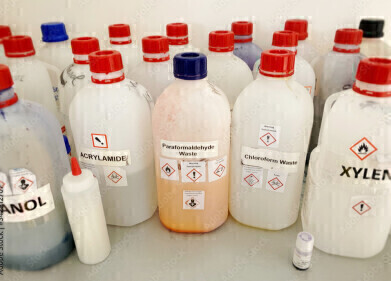Supercritical fluid (SFC), Green Chromatography
Is There a Biomarker for Tobacco Use? - Chromatography Investigates
Dec 20 2018
Cigarettes and tobacco have been used for thousands of years - indeed, the cultivation of tobacco goes back over 8000 years. Globally, tobacco use is the biggest cause of early preventable deaths. It is estimated that tobacco kills up to one third of those who use it. Tobacco use is closely associated with carcinomas like lung, mouth, throat, bladder, pancreas and stomach. Globally, smoking is the cause of over 90% of cases of lung cancer and tobacco control is arguably one of the main health challenges we face.
What are biomarkers?
One of the first steps to putting an adequate control programme in place is to have accurate and up-to-date data. But knowing the true levels of smoking in people are difficult to find. The simple and relatively inexpensive method way is to survey a group asking pertinent questions. But unfortunately, people have a habit of under and over exaggerating. It is a problem in many epidemiology studies - how accurate is self-reporting? The answer lies in using bio-markers - biological indicators of disease, substance use and health.
Biomarkers are used in clinical research and practice in many areas of medicine. Biomarker - biological marker - gives an objective indication of a medical state that can be measured accurately and reproducibly. There are several definitions of biomarker in the medical and scientific literature - but one definition determined by WHO and the UN is: ‘any substance, structure, or process that can be measured in the body or its products and influence or predict the incidence of outcome or disease.’ A recent paper published in the International Journal of Scientific Research - Comparison of urinary cotinine and psychiatric morbidity - investigated the use of cotinine as a biomarker for tobacco use.
Cotinine - biomarker for tobacco
There are many biomarkers that can be used for the determination of tobacco exposure. But the two biomarkers that are used in most circumstances are nicotine and cotinine. However, there are limitations in using nicotine as a biomarker for tobacco use. Nicotine has a relatively short half-life in the body, it requires a complex measurement and there can be variability in plasma levels in people with impaired kidney function.
Cotinine is a metabolite of nicotine that can be analysed in plasma, urine and saliva. Compared to other biomarkers it has several advantages including a long half-life, ease of measurement, stable in body fluids and little variability in smokers. These factors mean cotinine is frequently used as a biomarker - with urinary cotinine and tobacco use having a good correlation. Cotinine levels in urine are measured using liquid chromatography. The use of chromatography to screen samples is discussed in the article, Addressing the Need for Faster Screening and Fraction Collection for Chiral and Achiral SFC.
Digital Edition
Chromatography Today - Buyers' Guide 2022
October 2023
In This Edition Modern & Practical Applications - Accelerating ADC Development with Mass Spectrometry - Implementing High-Resolution Ion Mobility into Peptide Mapping Workflows Chromatogr...
View all digital editions
Events
Apr 23 2024 Kintex, South Korea
Apr 23 2024 Seoul, South Korea
Apr 28 2024 Montreal, Quebec, Canada
May 05 2024 Seville, Spain
May 15 2024 Birmingham, UK














